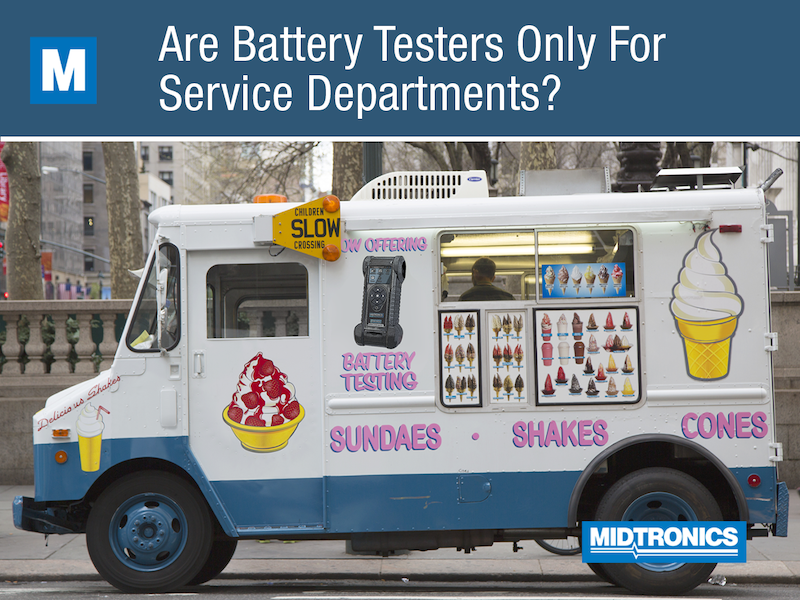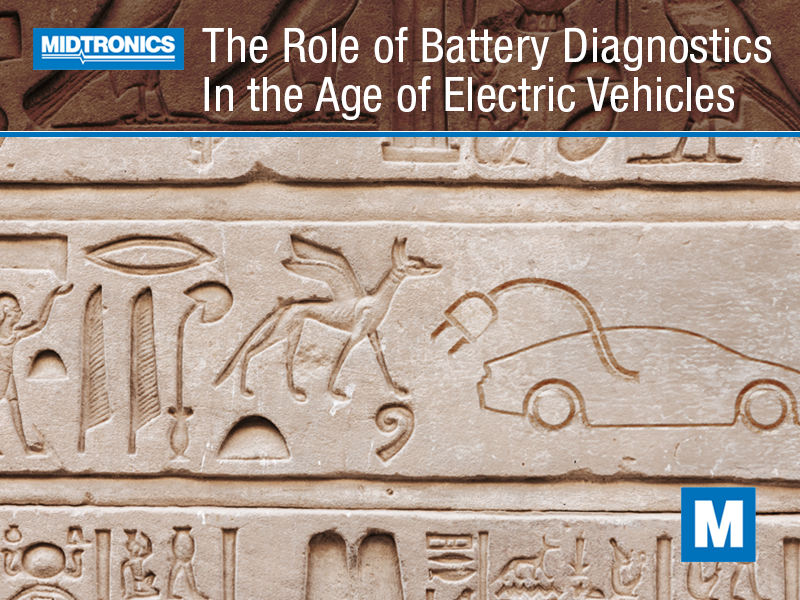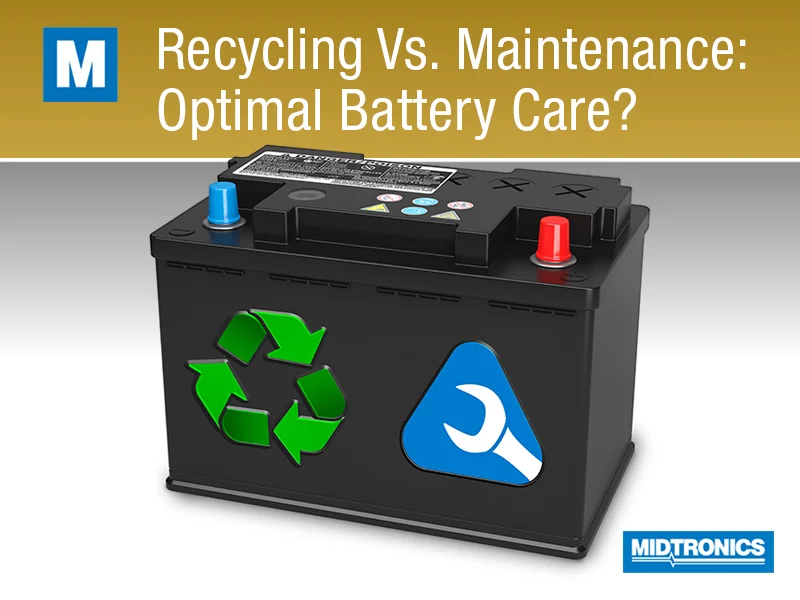At car dealerships and service centers, it’s typically a technician’s job to test batteries. Processes are laid out to make sure that every vehicle has been checked when it passes through, keeping customers satisfied and confident in their car’s condition. But the use cases for battery testers doesn’t have to be limited only to service personnel.
12-volt battery systems can fail in a range of ways, and not just when they’re coming in for symptoms. There are uses for battery testers in nearly every consumer-facing department. Here’s how it can make a difference for your business.
Ways that Battery Diagnostic Equipment is Used in Service Departments
The most common place you’ll find battery testers is in the service department, where customers are bringing vehicles to be inspected or diagnosed. And you can expect to see the equipment in use in several different areas:
- In the service drive – As customers bring their vehicles to the dealership or repair shop, a battery test is completed. This test is primarily for peace of mind, ensuring the battery passes strict criteria that the vehicle requires. It’s crucial, though, since approximately one in six batteries are weak or failed, and early identification – prior to being symptomatic – is key.
- In the mechanics’ bays – On a multi-point inspection or to diagnose a concern a customer has, mechanics employ battery diagnostic equipment to test for condition several times per day. This could be the same handheld device as in the service drive, but it could also be a more complete diagnosis using larger shop equipment that integrates charging capabilities. It’s in this venue that the capacity to print warranty codes is compulsory.
- On PDIs – As new vehicles arrive from the manufacturer and are prepped for the new car lot, each one receives a battery test, complete with computerized printout and warranty code. This not only ensures that the battery is good when the vehicle arrives, but it provides the manufacturer a basis to refute warranty claims on dealer inventory from lack of care on the lot.
Each battery tester gets used multiple times per day, normally, and some in the service department can get connected to literally dozens of cars between opening and closing time.
How Sales Departments Should Use Battery Test Equipment
But service departments aren’t the only place where test equipment is a valuable – even essential – tool. Any sales manager would agree that they spend an inordinate amount on new batteries for in-stock vehicles, and they’d love to avoid that cost whenever possible. Having a battery tester on hand could be just the ticket to thousands of dollars in savings annually.
Every salesperson with more than a few weeks of experience is familiar with the aggravation. They head out to show a car to a potential buyer, but the keyless entry remote won’t make it honk, then the key won’t even turn the lights on. As soon as that scenario plays out, the odds of making the sale all but vaporize, and the customer is heading elsewhere to shop. It can be avoided by routinely testing battery health on every vehicle in inventory, new and used, and it can be done by salespeople or lot attendants. Weak batteries can be charged before a customer gets turned off. And for car lots with hundreds of vehicles, testing one row per week might be enough to cover your bases, taking around a minute per car.
Why Collision Repair Centers Need Battery Diagnostics
Few places in a dealership experience more conflict than the collision repair center. Customers come in upset at their vehicle’s damage, and they seldom leave much happier. For the staff at the collision center, blame can be placed at their feet for a dead battery when the customer comes to pick up their car, and almost all the time, it’s of no fault of the staff’s.
Cars arrive on the back of a tow truck often, and neither the customer nor insurer is around to verify the condition of the vehicle’s components, battery included. It leaves a wide-open window for pointing fingers later on if the battery should no longer be charged or healthy when the car is picked up. A great process to include is two-fold: perform before-and-after battery tests.
When the vehicle first arrives and is inspected by collision repair staff, include a printout from the battery tester of the initial condition, attaching it to the work order. Then, after repairs are complete, perform a second battery test, providing comparable data to help determine who might be responsible in the event of a bad battery.
- Did the initial battery test fail? It’s either the customer’s or the insurer’s responsibility.
- Did the second battery test fail, but the first was good? There could be some responsibility for its condition at the shop, or it might be related to the accident.
- Are both tests good? The customer has peace of mind that their car will start when they head out to it on the lot.
An additional practice that can be put into action is a routine battery test and recharge every two weeks for vehicles around that long.
Applications for Parts Departments
And finally, the parts department should be equipped with a battery tester too. Two use cases, in particular, make it a worthwhile investment:
- Warranty claims. Over-the-counter warranty claims on batteries can land parts desk staff in hot water if the battery isn’t actually failed. And without proof of physical damage like a bulged case, it can be hard to deny a claim. But when a battery tester can quickly assess the condition, it can help the parts department avoid chargebacks.
- On–the-shelf inventory. Batteries don’t always sell quickly, and a customer can get quite upset if their new battery isn’t charged. Every month, it pays to test all batteries on the shelf and confirm they’re charged so they won’t degrade before they’re even sold.
Conclusion
Around the dealership, there are uses for battery testers well beyond just the service department. Will they be used as often as the equipment in the service drive? No. Are they as valuable a tool? Absolutely. Not only can you avoid unnecessary costs, but your customers are going to be more satisfied when testers are put to use properly.




